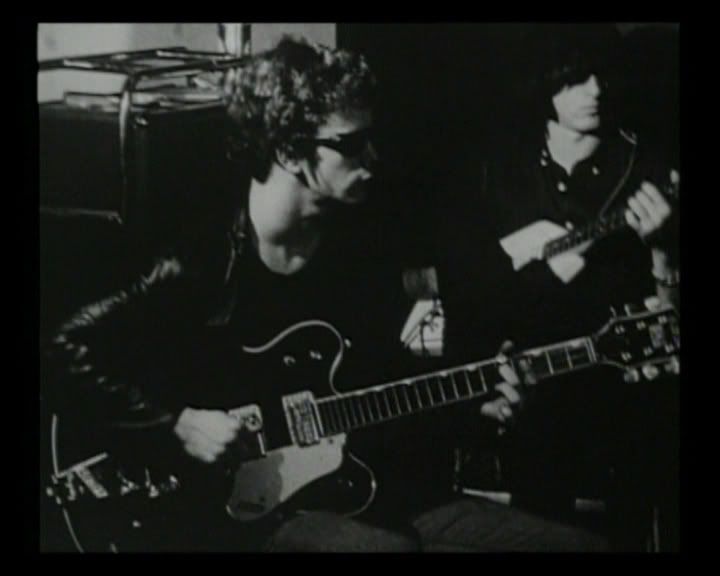
Andy Warhol was always, in his film work, interested in the tension between celebrity and ordinariness. This constant theme is especially present in his highly unusual The Velvet Underground and Nico, his document of an improvisatory 1966 performance by the Velvets at Warhol's Factory. Unfortunately, most people who have even heard of the film seem to be approaching the film as fans of the band, and in that respect it can't help but be disappointing. The music itself is interesting, in the avant-garde tradition of the group's drone-rock jam sessions like "Melody Laughter" or "European Son" rather than their more pop- or rock-oriented songs. Warhol's decision to record from a single static mic distances the music, making it fade in and out and giving it a reedy, noisy quality that enhances its dissonant rawness. But fans of the band are doubtless coming to a video performance in search of ever-elusive footage of the band itself, and Warhol's film steadfastly refuses to provide any straightforward concert footage.
The film starts with a static master shot of the band, grouped around the tall Nordic chanteuse Nico, with her infant son playing at her feet. From there, the camera almost immediately begins shifting and moving, disrupting the unity of the shot, cutting everything into minuscule pieces with wild pans, zooms, and light flares. Warhol's camera stays in a static position, but it zooms frantically in and out, pans across the stage, lets light flood the frame in whiteness or darkness close in, shakes and vibrates in attunement with the music's primal drone. The camera's constant, sickening movement pixelates the band, reducing them to shards of leather jackets, dark sunglasses, cross-sections of instruments. There are glimpses of the band's iconic cool, and periodic focus on the motions of their playing, but these things arise out of the whole like a mosaic image seen from afar. Up close, the individual details seem random, haphazard, isolated, and it's only in the context of the whole that a kind of composite image of the Velvet Underground appears.
The film concludes when the police arrive on the scene thanks to noise complaints, pulling the plug on the band's amplifier and ending the gig early. Warhol documents the ensuing activity from the same static position, although now his camera settles down somewhat and mostly sits still. The muted conversations and chatter of the Factory regulars as they hang out and mill around forms a drone comparable to the music that just ended, an audio echo of the Velvets' performance in everyday conversation. Warhol's film is perhaps so unusual because it inverts the usual role of film, especially performance film. Where most films show, Warhol prefers to obscure; where most films focus, Warhol atomizes and destroys until all focus is lost in a barrage of unresolved fragments. It's a fascinating formal experiment and worth a look for fans of Warhol and the Velvets alike.

No comments:
Post a Comment